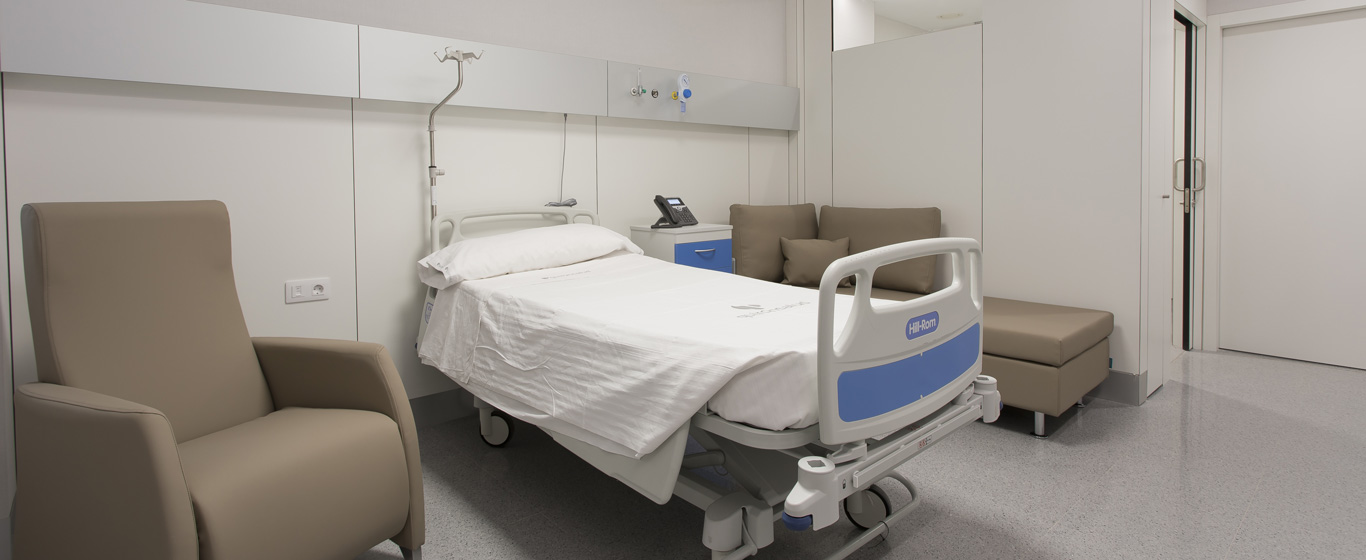Cirrhosis
What is the life expectancy with hepatic cirrhosis? Information on the causes, symptoms, and the most effective treatments for this disease.
Symptoms and Causes
Hepatic cirrhosis is the deterioration of the liver due to previous chronic diseases. Normal liver tissue is permanently replaced by non-functional scar tissue. When the liver suffers an injury, it creates scar tissue as part of the healing process. Cirrhosis develops when very little healthy liver tissue remains, leading to impaired function.
There are different types of cirrhosis depending on the underlying cause. The main causes in our region are twofold: excessive alcohol consumption (alcoholic or ethanol-induced cirrhosis) and chronic hepatitis C virus infection (HCV cirrhosis), which account for 80% of cirrhosis cases in Spain.
- Alcoholic cirrhosis: The liver is damaged due to excessive alcohol consumption.
- Cirrhosis linked to hepatitis: Hepatitis B or C causes fibrosis in the liver.
- Non-alcoholic fatty liver disease (NAFLD): Excess fat accumulates in the liver.
Other types of cirrhosis:
- Primary biliary cirrhosis: A malfunction in the immune system causes the body to attack liver cells.
- Secondary biliary cirrhosis: An interruption in bile flow damages liver tissue.
- Primary sclerosing cholangitis: The bile ducts become inflamed and obstructed.
- Cryptogenic cirrhosis: Liver cells are damaged for unknown reasons.
In most cases, cirrhosis cannot be reversed. However, when detected early, treatment can target the underlying causes to minimize damage and increase life expectancy.
Symptoms
Cirrhosis usually does not present symptoms in its early stages. Over time, patients may experience signs such as fatigue or digestive discomfort. As the disease progresses, more recognizable symptoms appear, including:
- Jaundice: Yellowing of the skin and eyes.
- Gynecomastia: Some men develop abnormal breast enlargement.
- Amenorrhea: Women may experience an absence of menstruation.
- Fluid and salt retention: Leads to edema (swelling of the legs, ankles, or feet) and ascites (fluid accumulation and abdominal swelling).
- Bleeding: Ranges from mild bleeding in the gums to severe bleeding in the digestive system.
Causes
Excessive alcohol consumption or chronic infections lead to scar tissue formation, which is the liver’s way of healing itself. Cirrhosis can also develop due to hepatitis, Wilson’s disease, cystic fibrosis, or hereditary metabolic disorders affecting sugar metabolism.
Risk Factors
Given the primary causes of cirrhosis, the risk factors for developing it include excessive alcohol consumption, being overweight, or having hepatitis.
Complications
If left untreated or if preventive measures are not followed, cirrhosis can lead to severe complications such as:
- Enlargement of the spleen.
- Infections, such as bacterial peritonitis.
- Severe internal bleeding (ruptured varices in the stomach or esophagus).
- Malnutrition.
- Liver cancer.
- Toxin accumulation in the brain or other organs.
Prevention
Although some types of cirrhosis cannot be prevented, several measures can reduce the risk of developing it, such as:
- Avoiding alcohol consumption.
- Maintaining a healthy diet.
- Managing weight properly.
- Following medical recommendations to prevent hepatitis infection.
Which doctor treats cirrhosis?
Cirrhosis is treated by internal medicine specialists and digestive system specialists.
Diagnosis
Cirrhosis diagnosis is based on the following tests:
- Medical history evaluation to assess symptoms, alcohol consumption, hepatitis risk factors, or prescribed treatments.
- Blood tests to detect liver failure, enzyme levels, or hepatitis virus infection.
- Imaging tests, such as MRI, CT scan, or ultrasound, to examine liver condition.
- Elastography: A non-invasive technique that estimates liver fibrosis severity using a transient elastography device (commercially known as FibroScan), providing a good correlation with liver biopsy results.
- Biopsy to determine the extent of liver cell damage.
Treatment
There is no cure for cirrhosis, as the liver damage it causes cannot be reversed. However, symptoms can be managed through:
- Dietary recommendations to promote weight loss and encourage habits such as low salt intake and healthy eating.
- Therapy to stop alcohol consumption.
- Medications to reduce fluid retention or prevent bleeding.
- Antiviral drugs for viral hepatitis or corticosteroids for autoimmune conditions.
- Liver transplantation for severe cases where life expectancy is under two years.




































































































